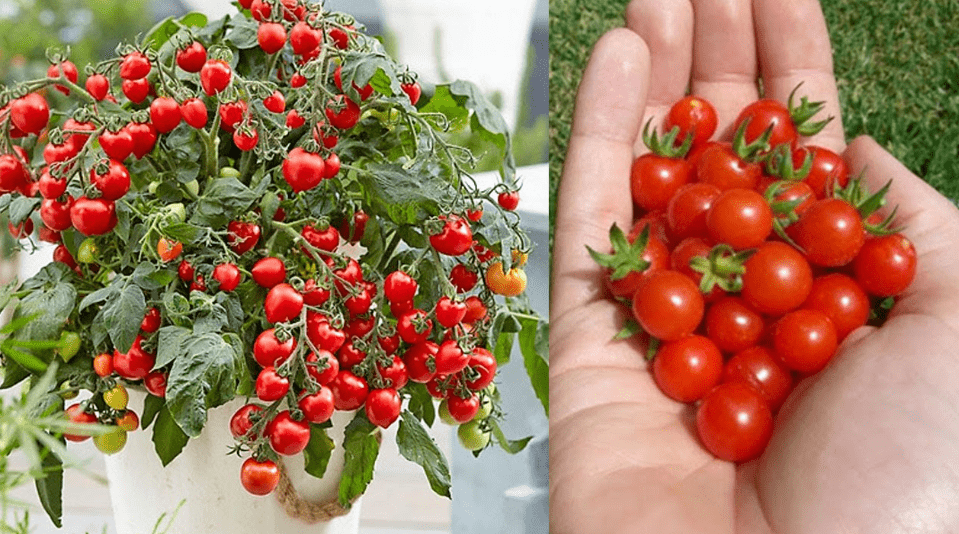
Growing Cherry Tomatoes in Pots: Tips for a Bountiful Harvest
Growing cherry tomatoes in pots can be a rewarding and enjoyable experience for any gardener, whether you’re a beginner or a seasoned pro. With the right care and attention, you can enjoy a bountiful harvest of delicious, juicy tomatoes right from your own patio or balcony. In this post, we’ll provide you with all the tips and techniques you need to successfully grow cherry tomatoes in pots, including the best varieties to choose, how to care for your plants, and how to ensure a bountiful harvest. So grab your gardening gloves and let’s get started!
Table of Contents
ToggleChoosing the Right Varieties
A. Best Cherry Tomato Varieties for Pots
When choosing cherry tomato varieties to grow in pots, it’s important to select compact and determinate varieties that are well-suited for container gardening. Some popular options include ‘Tiny Tim’, ‘Tumbling Tom’, and ‘Micro Tom’. These varieties have a smaller growth habit and are well-suited for smaller spaces.
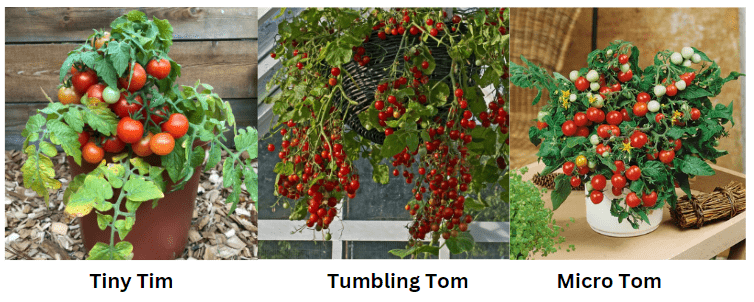
1. Determinate vs. indeterminate varieties
It’s important to note the difference between determinate and indeterminate varieties when choosing cherry tomatoes for pots. Determinate varieties have a more compact growth habit and tend to produce a single, concentrated harvest, making them ideal for container gardening. Indeterminate varieties, on the other hand, have a vining growth habit and continue to grow and produce fruit throughout the season, requiring more space and support.
When growing in pots, it’s best to opt for determinate varieties to ensure a successful and manageable harvest.
2. Popular varieties for container gardening
There are several popular cherry tomato varieties that are well-suited for container gardening, including ‘Tiny Tim’, ‘Tumbling Tom’, and ‘Micro Tom’. These varieties have a smaller growth habit and are perfect for smaller spaces, making them ideal for patio or balcony gardens. Their compact size makes them easy to care for and harvest, making them a great choice for anyone looking to grow cherry tomatoes in pots.
Selecting the Right Pot
A. Size and Material Considerations
1. Optimal pot size and depth
When selecting a pot for growing cherry tomatoes, it’s important to choose a container that is at least 10-12 inches in diameter and has a depth of at least 12-18 inches. This will provide enough room for the roots to grow and support the plant as it develops.
2. Types of pots: plastic, clay, fabric, etc.
When it comes to choosing the right type of pot for growing cherry tomatoes, consider the material of the pot. Plastic pots are lightweight and retain moisture well, making them a good choice for beginners. Clay pots are a popular choice for their natural look and their ability to absorb excess moisture, preventing root rot. Fabric pots are breathable and promote better air circulation for the roots, making them a good option for those concerned about overwatering. Ultimately, the choice of pot material comes down to personal preference and the specific needs of your cherry tomato plants.
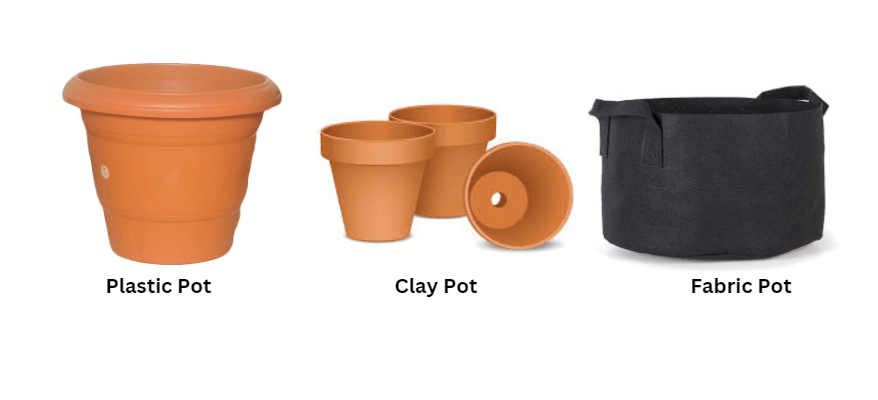
B. Drainage Requirements
When considering the drainage requirements for growing cherry tomatoes in pots, it’s important to choose a pot with adequate drainage to prevent waterlogged soil and root rot. Look for pots with drainage holes at the bottom to allow excess water to escape. Additionally, consider using a layer of rocks or gravel at the bottom of the pot to further improve drainage. It’s also important to monitor the moisture levels in the soil and adjust your watering schedule accordingly to ensure your cherry tomato plants thrive in their pots.
Preparing the Soil
A. Soil Mix for Cherry Tomatoes
When preparing the soil mix for growing cherry tomatoes in pots, it’s important to use a well-draining potting mix that provides enough nutrients for the plants. Look for a high-quality potting mix specifically designed for vegetable or fruit plants, as they often contain the right balance of nutrients and drainage properties. You can also mix in some compost or organic matter to further enrich the soil and provide a steady supply of nutrients to your cherry tomato plants. Make sure to fill the pot with the soil mix, leaving some space at the top for watering and root growth. Overall, the key is to provide a nutrient-rich, well-draining soil mix that will support healthy growth for your cherry tomatoes in pots.
B. Starting with Seeds vs. Seedlings
Starting with seeds or seedlings when growing cherry tomatoes really depends on your preference and experience level. Starting with seeds allows you to have full control over the growing process and can be a more cost-effective option. However, it does require a bit more time and attention to ensure successful germination and early growth.
On the other hand, starting with seedlings can be a more convenient option, especially for beginners, as it saves time and gives you a head start on the growing process. You can often find healthy, established seedlings at garden centers or nurseries.
Ultimately, both methods can be successful, so choose the option that best fits your gardening style and available resources. Just make sure to provide the right growing conditions and care for your cherry tomato plants, whether they’re started from seeds or seedlings.
Planting Cherry Tomatoes in Pots
A. Step-by-Step Planting Guide
1. How to fill the pot with soil
When growing cherry tomatoes in pots, it’s important to start with the right soil. You’ll want to use a high-quality potting mix that is well-draining and rich in organic matter. To fill the pot with soil, start by adding a layer of small rocks or broken pieces of terra cotta to the bottom of the pot. This will help with drainage and prevent the soil from becoming waterlogged. Next, fill the pot with the potting mix, leaving about 1-2 inches of space at the top for watering. Gently pat down the soil to firm it up, but be careful not to compact it too much. Once the pot is filled, you’re ready to plant your cherry tomato seedlings or seeds. Just make sure to water the soil thoroughly after planting to help settle it in place. And don’t forget to place the pots in a sunny location, as cherry tomatoes need plenty of sunlight to thrive. By following these steps, you can create the perfect growing environment for your cherry tomatoes in pots.
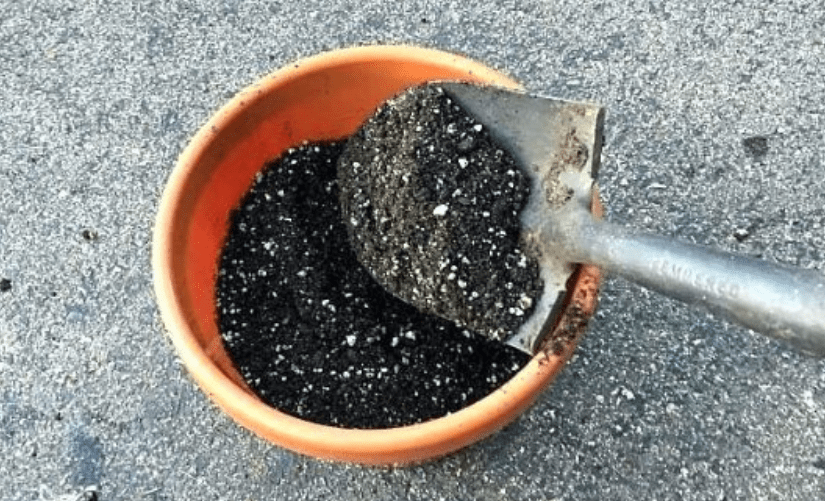
B. Supporting Your Plants
Now that your cherry tomato plants are settled in their pots, it’s important to provide them with proper support as they grow. You can use tomato cages or stakes to help keep the plants upright and prevent them from bending or breaking under the weight of their fruit. As the plants continue to grow, gently tie them to the support to help guide their growth and keep them from sprawling all over the place. This will also help improve air circulation and sun exposure, which is essential for healthy tomato plants. By providing proper support, you can ensure that your cherry tomato plants will thrive and produce a bountiful harvest.
Care and Maintenance
A. Watering Guidelines
When it comes to watering your cherry tomato plants, it’s important to find the right balance. Generally, you want to keep the soil consistently moist, but not waterlogged. Watering in the morning is best, as it allows the plants to absorb the moisture before the heat of the day sets in. Keep an eye on the soil and adjust your watering schedule as needed, depending on weather conditions and the size of your pots. It’s also a good idea to mulch around the base of the plants to help retain moisture and reduce the need for frequent watering. By following these watering guidelines, you can help your cherry tomato plants stay healthy and produce delicious fruit.
B. Fertilizing Schedule
When it comes to fertilizing your cherry tomato plants, it’s important to provide them with the nutrients they need to thrive and produce a bountiful harvest. A balanced fertilizer with equal parts nitrogen, phosphorus, and potassium is ideal for cherry tomatoes. You can start by applying a slow-release fertilizer when you first plant your tomatoes, and then continue to fertilize every two to three weeks throughout the growing season. Be sure to follow the instructions on the fertilizer package to avoid over-fertilizing, which can harm the plants. Additionally, it’s a good idea to use organic fertilizers to minimize the risk of chemical buildup in the soil. By following a regular fertilizing schedule, you can help your cherry tomato plants grow strong and healthy.
C. Pruning and Pinching
When it comes to pruning and pinching your cherry tomato plants, it’s important to promote healthy growth and maximize fruit production. Pruning involves removing suckers that grow between the main stem and branches, which helps direct the plant’s energy towards fruit production. Pinching, on the other hand, involves removing the tips of the main stem and branches to encourage bushier growth and more fruit-bearing nodes.
You can start pruning and pinching your cherry tomato plants once they have established a few sets of leaves. It’s important to regularly check for suckers and remove them as soon as you see them to prevent the plant from becoming too crowded and to encourage better air circulation.
It’s also important to use clean, sharp pruning shears to avoid damaging the plant. By regularly pruning and pinching your cherry tomato plants, you can help them grow into healthy, productive plants with a bountiful harvest.
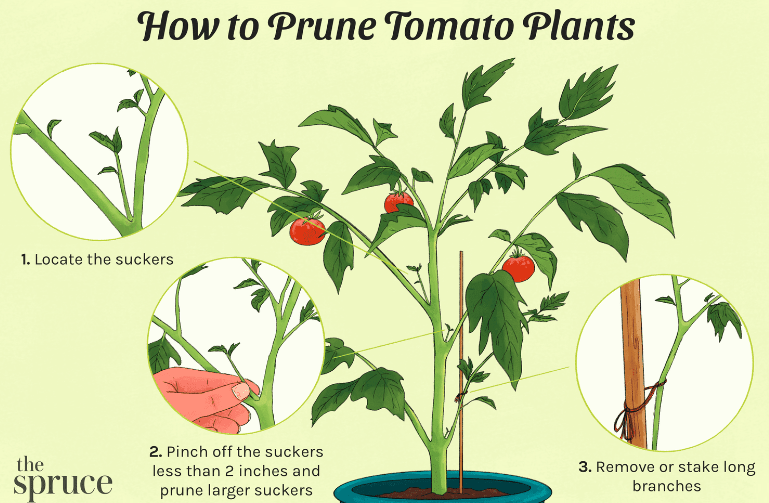
Dealing with Pests and Diseases
A. Common Pests and How to Combat Them
Some common pests that can affect cherry tomato plants include aphids, whiteflies, and hornworms. To combat aphids and whiteflies, you can try using insecticidal soap or neem oil, or introducing natural predators such as ladybugs or lacewings. For hornworms, you can manually remove them from the plant or use Bacillus thuringiensis (Bt) insecticide.
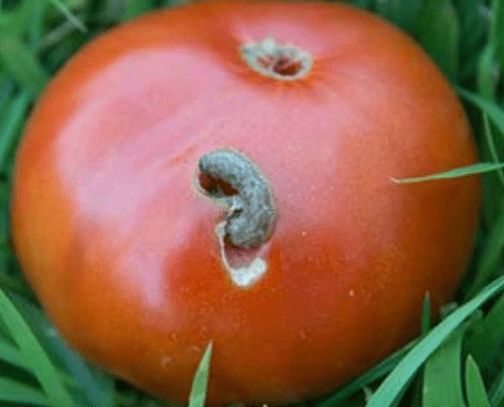
B. Common Diseases and How to Prevent Them
Some common diseases that can affect cherry tomato plants include fungal diseases like early blight, late blight, and powdery mildew, as well as bacterial diseases like bacterial spot and bacterial canker. To prevent these diseases, it’s important to practice good garden hygiene, such as avoiding overhead watering, providing adequate air circulation, and spacing plants properly. You can also use fungicides and bactericides as a preventive measure, and remove and destroy any infected plant material to prevent the spread of disease. Additionally, choosing disease-resistant varieties can help prevent infections.
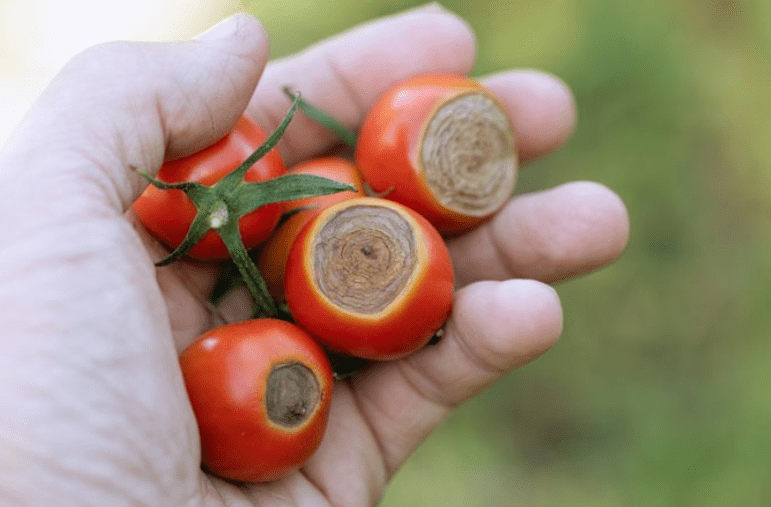
Harvesting Cherry Tomatoes
A. When and How to Harvest
It’s best to harvest cherry tomatoes when they are fully ripe and have developed their full color. Gently pick the tomatoes from the plant, being careful not to damage the stems or surrounding fruit. It’s recommended to harvest cherry tomatoes regularly, as this can encourage the plant to produce more fruit. Additionally, if you have a large harvest, store the tomatoes in a cool, dry place and use them within a few days to ensure they stay fresh and flavorful.
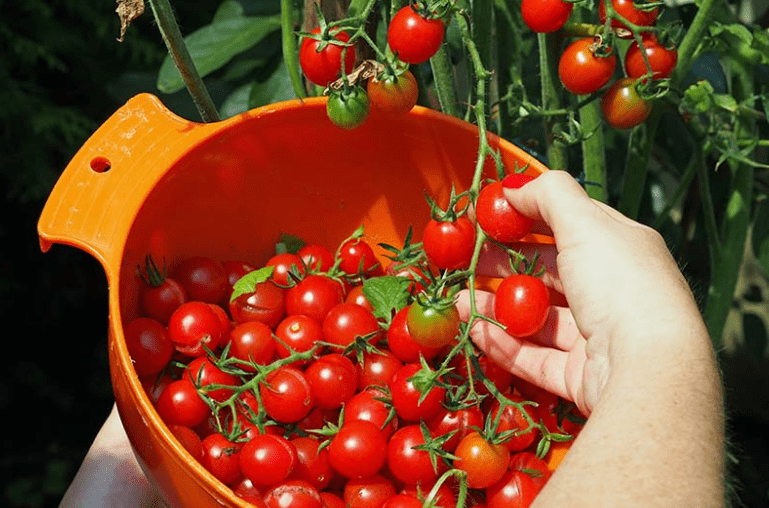
B. Storing and Using Your Harvest
After harvesting your cherry tomatoes, it’s important to store them properly to maintain their freshness. You can store them at room temperature for a few days, but if you have a large harvest, it’s best to store them in a cool, dry place to prolong their shelf life. If you have an excess of cherry tomatoes, consider making sauces, salsas, or preserves to use them up before they spoil. Additionally, choosing disease-resistant varieties can help prevent infections and ensure a healthy harvest.
Troubleshooting Common Problems
A. Yellowing Leaves, Blossom End Rot, and Other Issues
If you notice your tomato plant’s leaves turning yellow or brown and developing brown, sunken spots on the bottom of the fruit, you may have a calcium deficiency, which can lead to blossom end rot. To prevent this, ensure your plants are receiving adequate water and consider adding calcium-rich amendments to the soil. Additionally, yellowing leaves can also be a sign of overwatering or nutrient deficiencies, so be sure to monitor the moisture levels and fertilize as needed. Pests and diseases such as aphids, hornworms, and blight can also cause issues, so be vigilant and address any problems promptly to ensure a healthy tomato harvest.
In conclusion, growing cherry tomatoes in pots can be a rewarding and bountiful experience if you follow the right tips and techniques. Choosing the best varieties, providing proper care, and ensuring the right conditions for growth are all important factors in achieving a successful harvest. By following the advice in this post, you can enjoy a bountiful harvest of delicious cherry tomatoes from your own potted plants. Happy gardening!
Frequently Asked Questions (FAQs)
You should use a pot that is at least 18 inches in diameter and has drainage holes at the bottom to ensure proper drainage for the plant.
You should water your cherry tomato plant in a pot regularly, making sure the soil is consistently moist but not waterlogged. This may mean watering every 1-2 days, depending on the weather and the size of the pot.
You should use a well-draining potting mix that is rich in organic matter and nutrients to support the growth of the cherry tomato plant.
Yes, you should use a balanced fertilizer specifically designed for tomatoes to provide the necessary nutrients for healthy growth and bountiful harvest.
Cherry tomato plants thrive in full sunlight, so it’s best to place the pot in a location where the plant will receive at least 6-8 hours of direct sunlight each day.
Pruning can help promote better air circulation and fruit production, so it’s recommended to prune your cherry tomato plant by removing suckers and any non-fruiting branches.
Common pests and diseases that can affect cherry tomato plants include aphids, whiteflies, and fungal diseases. It’s important to monitor your plant regularly and take appropriate measures to prevent and treat any issues that may arise.
Cherry tomatoes are ready to harvest when they are fully colored and firm to the touch. It’s best to harvest them regularly to encourage continuous fruit production.
